This past Saturday I found myself with a little time to myself while out running an errand and I decided to pop into my local thrift store to see if I could find any treasure. And sure enough, $8.00 later, I had struck gold (well for someone who loves sewing!). So here’s what I found……
I found a set of vintage floral sheets (set included a flat sheet and two standard pillowcases), a couple embroidery hoops (you can never have enough of those), and three large pieces of fabric.
One of the fabrics was 1.5 yards of a linen/cotton blend that was sold for .75 cents and included a matching zipper – treasure for sure! Another piece was a neutral quilted piece of fabric. And finally, my favorite was this giant piece of wool suiting (which can be VERY expensive at retail prices). These three fabrics just have my creative wheels turning for fall……..I’m seeing a fall coat tutorial coming!
As with any new fabric, it is very important to prep your fabric before sewing with it. When it comes to thrift-store finds you may not know the true composition of each fabric – therefore washing can become a little tricky.
But for me, for .75 cents, I’m happy to give washing and drying a go – if it doesn’t turn out, no worries. But I have to say, if I sewed something that took a lot of time and energy and then went to wash it, I would be VERY sad if it didn’t turn out. So, my point is, if you are unsure of the composition of a fabric or don’t know much about the manufacturer, then definitely prewash.
Knit fabrics can shrink a considerable amount (yes, I learned this the hard way), so I always prewash those. You may find after working with specific fabric manufacturers that some fabric shrinks more than others. Also, if you are sewing children’s clothing, it is very important to wash your fabric so it doesn’t irritate your little ones skin. I have found that the high-quality designer cotton fabric purchased these days doesn’t have much of a shrinkage factor or at least not enough to affect the fit of a garment. So you can wash the garment after sewing and then put it on your little one. Whether you pre-wash before construction or wash after garment completion, you want to make sure you do so prior to putting the clothing on your child.
Before throwing my fabric in the wash, I like to serge the raw edge. If you don’t have a serger, you can try doing a tight zig-zag stitch on the edge with a regular sewing machine to achieve the same effect.
By serging the raw edge, you eliminate all of the fraying that can occur in the washing machine. Your fabric will come out looking the same way it went in. This is definitely not something you must do, but I have found it to make life a little easier.
I made sure to serge the raw edges of all the fabric pieces that I brought home from the thrift store.
Most fabrics are pretty good about not spreading dye from one fabric to another as long as you group like colors together. But if you have a fabric that has a lot of white with some other more bold colors, I suggest throwing in one of these Shout Color Catchers. It’s basically just a sheet you put in your wash and it will catch any loose dye that may come from your fabric. It’s also great if you are unsure about the quality of the fabric and are worried about dye bleeding. They are a truly great invention!!
Here are my fabrics all ready to be washed. I usually wash on cold and tumble dry. Because I do a lot of children’s clothing I like to pre-wash using Dreft just to make sure my garments don’t irritate any little ones skin.






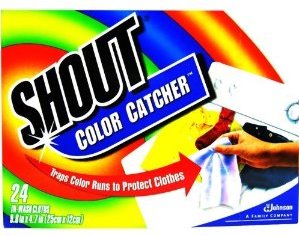






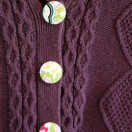
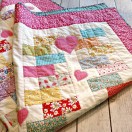

 Lindsay Wilkes is the owner and designer behind The Cottage Mama. She creates timeless, vintage inspired sewing patterns for children’s clothes. She is also a fabric designer for Riley Black Designers / Penny Rose Fabrics, author of the book ‘Sew Classic Clothes for Girls’ and can be seen teaching nationwide and online in her video series ‘Lessons with Lindsay’ sponsored by Baby Lock Sewing and Embroidery machines.
Lindsay Wilkes is the owner and designer behind The Cottage Mama. She creates timeless, vintage inspired sewing patterns for children’s clothes. She is also a fabric designer for Riley Black Designers / Penny Rose Fabrics, author of the book ‘Sew Classic Clothes for Girls’ and can be seen teaching nationwide and online in her video series ‘Lessons with Lindsay’ sponsored by Baby Lock Sewing and Embroidery machines.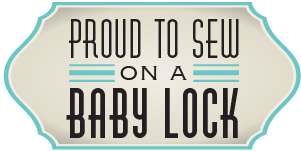


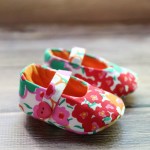

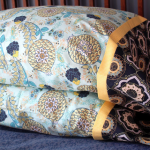
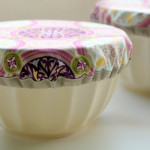
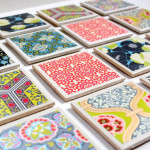
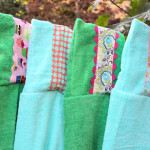
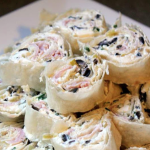




Serging makes a lot of difference. If I don’t have time to sew the edges of the fabric before washing, I have found that placing each fabric in it’s own mesh laundry bag can help keep the unravalign and attaching to other pieces to a minimum.
~Kimberlee
http://www.TheSpunkyDiva.blogspot.com
THANK YOU so much for both of those tips. I often lose a giant amount of fabric to fraying…and subsequent catching on the washer arm and getting all a mess! That is a great idea. I don’t have a serger, but I can use my little “fake serger” stitch along the edge!! Thanks!
great finds! are those your fabrics neatly lined up on the shelf? if they are, i am so JEALOUS!!! can’t wait to see whatcha make!
Love how you organized your fabric!! Where did you get your “bolts” that hold your fabric. What a great idea! I love finding bargain fabrics! Thanks for sharing.
Thanks for the tips. I keep seeing the benefits to having a serger…hhmmm. I wish there was a goodwill or such closer to my home. Finding fabric must be so great!!!
I want to thank you for sharing those tips. I am so sure that it is going to be so helpful for me. I am going to share this post to all my friends.
Awesome finds! And thanks for the tips!
Ooooo! Love your blog! Thanks for the great tips. I am now a follower and I will “Like” on FB. and I want to enter your Giveaway. I love fabric! Came here from Trendy Treehouse. Great blog!
I never thought about finishing the edge of fabric before preshrinking. I think a simple basting stitch (long running stitch) might do the trick as well and save a lot of thread compared to serging, though.
I love that suiting fabric, what a great find!!
Christine
http://www.fromanigloo.blogspot.com
Hi there! Is that a photo of your fabric so neatly organized? That’s an awesome idea- what are the bolts? And if you don’t mind me asking, where did you get them? It would do my sewing room a world of good if I could figure out a good way to store my fabric so that I can see it all! Thanks!
I wanted to ask you a question, when you are buying big yardages how to you go about washing and folding them up sew neatly onto your little card thingies? I’m going crazy trying to do it to 3 or more yards.
What do you do when a pattern has a piece that needs the fabric to be as wide as the bolt, when you wash and shrink you can lose up to a couple of inches! Then I end up trying to cut that pattern piece in half and piece it together and it never turns out right. Thanks for the help! Love the blog, it is great to have a place to turn for learning little tricks to take my sewing to the next level!
–Julie
[email protected]